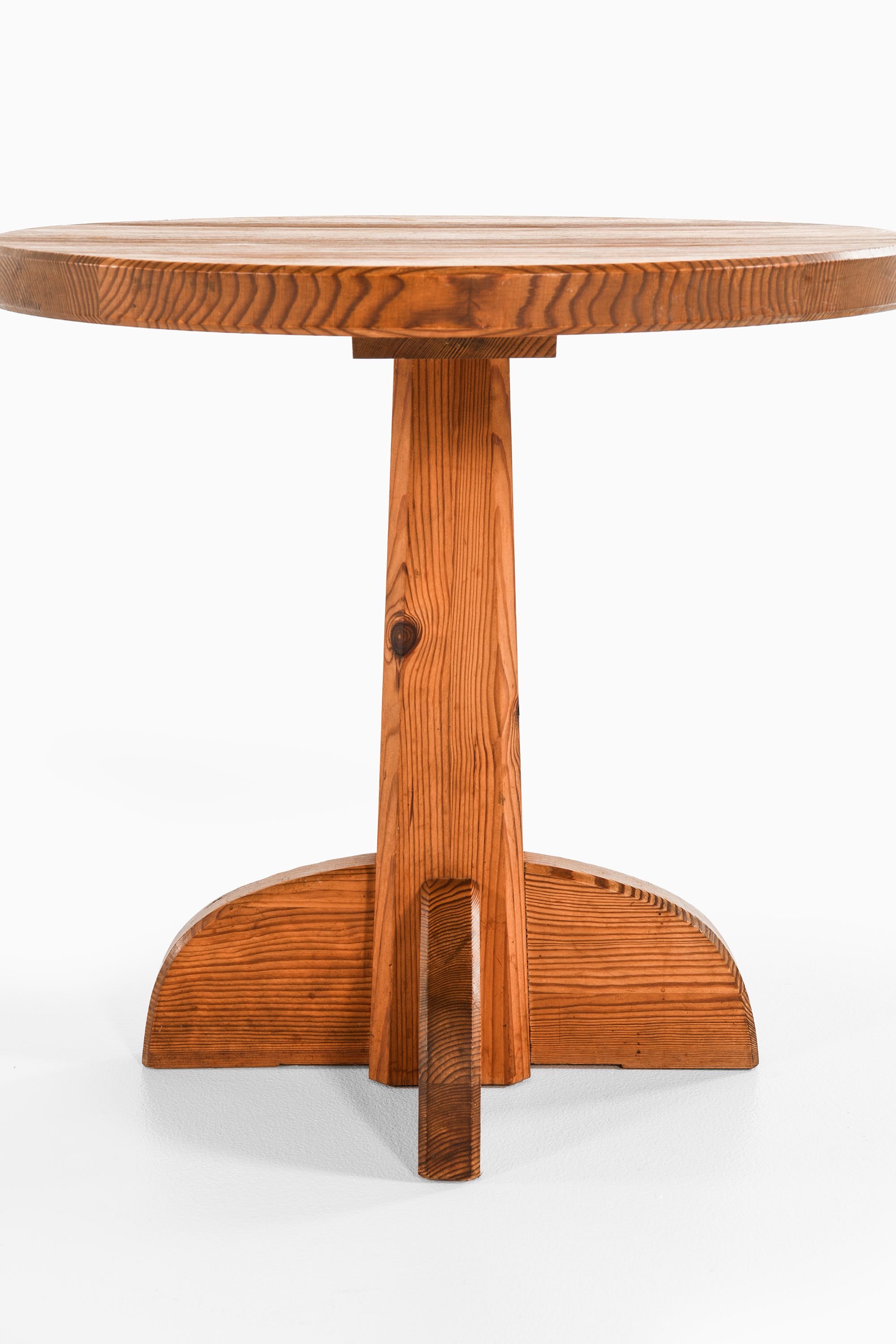Axel Einar Hjorth table
This rare table, model Lovö, was designed in 1939 by Axel Einar Hjorth and produced by Nordiska Kompaniet in Sweden. It is a significant example of Hjorth’s Sportstugemöbler (Sport Cabin Furniture), a body of work created in the 1930s for modern Swedish summer homes. These designs blended rustic simplicity with modernist refinement, and the Lovö table illustrates this synthesis through its honest materiality and sculptural form.
Crafted from acid-stained pine, the table exhibits a rich golden-brown tone that emphasizes the bold grain patterns inherent to the wood. The acid treatment deepens the color and brings out variations in texture, giving the surface a warm, tactile quality that evokes both nature and craftsmanship. The finish has aged gracefully, developing a subtle patina that reflects the piece’s vintage character without compromising its structural integrity.
The design features a circular tabletop supported by a central vertical column. From this column, two wide, curved feet extend outward in a symmetrical, low-profile configuration. These sculptural supports are both functional and architectural in character, giving the table a sense of grounded elegance. The proportions are compact, and the construction is robust—intended to endure daily use while maintaining visual lightness and grace.
The Lovö model is part of Hjorth’s broader attempt to redefine Swedish furniture for a new leisure culture. The Sportstugemöbler series departed from the ornate historical styles of the early 20th century, embracing modernist ideals of simplicity, natural material expression, and adaptability to informal domestic life. While minimalist in form, the table maintains a strong presence through its material richness and precise detailing.
This particular piece comes with notable provenance. It was originally located in the Scharinska villan in Umeå, a significant building designed by architect Ragnar Östberg and constructed in 1904–1905. Prior to the villa’s sale to the Umeå Municipality in 1957, original furnishings were removed and sold, with this table subsequently acquired for a mountain cabin in Hemavan, completed in 1956. The documented provenance adds historical and cultural depth to the piece, further enhancing its significance as a collector’s item.
The table remains in well-preserved condition, with only minor signs of wear and aging consistent with its age. The surface exhibits light patina and subtle markings, but the form and finish retain their original character and stability.
The dimensions are 61.5 cm in diameter and 58.5 cm in height, which corresponds to approximately 24.2 inches in diameter and 23 inches in height.
Provenance
Scharinska villa in Umeå, designed by Ragnar Östberg. The villa was built in 1904-05 and was privately owned until 1957 when the villa was acquired by Umeå Municipality. In 1960, the villa became the Umeå Student Union's first union house. Before the sale to Umeå municipality, fixtures were sold and the present furniture was purchased by a private person for a new mountain cabin in Hemavan that was completed in 1956.
Dimensions (cm) | H: 58.5 / ⌀: 61.5 |
| Producer | Bergsjö Sweden, NK Nordiska Kompaniet |
| Decade | 1930s |
| Country | Sweden |
| Style | Scandinavian Modern |
| Material | Pine |
| Designed in | 1939 |
| Item Number | 238766 |
Axel Einar Hjorth
Axel Einar Hjorth (1888–1959) was a Swedish furniture designer and architect whose stylistic range and prolific output made him one of the most versatile and dynamic figures in early 20th-century Scandinavian design. Best known for his luxurious...
Read more








